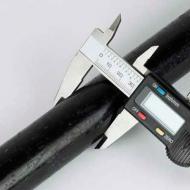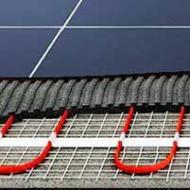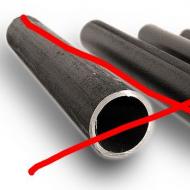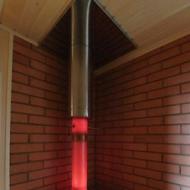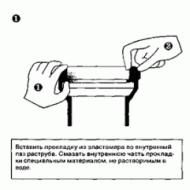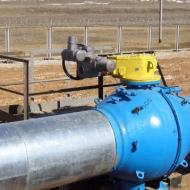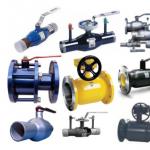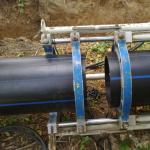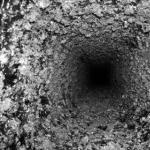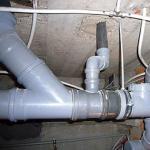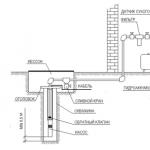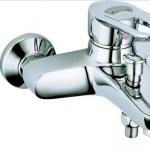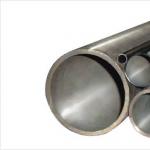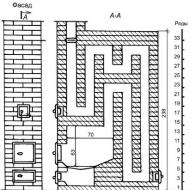
What are the dimensions of the pipes. Diameter of water pipes: how to choose and calculate
Many of us have to face the need to replace water pipes. You can solve this issue yourself or with the help of a professional master. When replacing a pipeline, it is important to understand which pipe diameter for a water pipe is optimal from a technical point of view. Today, the market has a wide variety of pipes, which differ in the quality of the material, size and diameter. Products of what diameter will fit in this or that case, our article will tell.
Dimensional characteristics of pipes
Modern water supply is a rather complex structure, an important element of which are the pipes. The most demanded are metal-plastic, steel and copper pipes. The main physical characteristics that determine the size of pipes for water supply are:
- The internal diameter is a single characteristic for the nodes and pipes of the water supply system. The internal diameter must be the same for both the pipes to be connected and for the fittings that connect them.
- The diameter of the conditional pass is the nominal value, measured in millimeters, used for the installation of water pipes.
- Wall thickness.
- The length of the pipe.

It is important to choose the right diameter of plastic pipes for the water supply, otherwise you may encounter constant noise and malfunctions in the water pipe. This is due to the turbulence of the flow, the process that results from the use of small diameter pipes.
Interrelation of characteristics
How the length of the water pipe affects the diameter of the pipes
The average flow rate in a standard water pipe is 0.02 km / s. This figure affects the selection of the diameter of the pipes. How to calculate the diameter of a water pipe taking into account the length of this communication:
- If the length of the system is less than 30 meters, you should pay attention to the pipes with a diameter of 25 mm.
- If the length of the system is more than 30 meters, the use of pipes with a diameter of 32 mm is considered actual.
- If the length of the system is less than 10 meters, pipes with a diameter of 20 mm are perfectly suitable.
The standard length of domestic water pipes is 4 meters. But in practice, pipes up to 14-15 meters in length can be used.
When choosing long products, special attention should be paid to the quality of fittings, couplings and other connections. They will ensure a reliable and durable operation of the water supply.
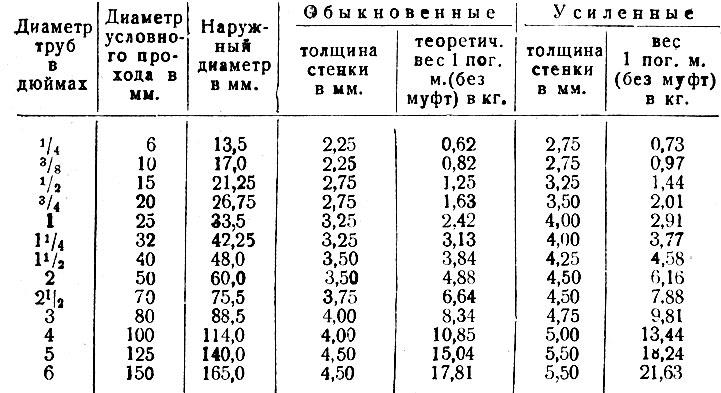
Why the diameter of the pipes determines the throughput of the water supply
The diameter of the pipe determines the important characteristic - the throughput of the water pipe. For example, pipes with a diameter of 25 mm can drive up to 30 liters of water for a minute. For a pipe of 32 mm this figure increases to 50 liters.
In this case, it should be borne in mind that an ordinary tap in the kitchen or in the bathroom is able to pass no more than 5 liters of water. Thus, the choice of pipe diameter directly depends on the flow of water resources.
The more water consumption points, the greater the diameter of the pipes. Pipes for hot and cold water supply can be selected the same diameter, but the wall thickness of the pipes for hot water should be an order of magnitude higher.
When deciding which pipe diameter you need for a water pipe, pay close attention to the following parameters:
- The length of the water pipe.
- The number of proposed joints.
- Number of turns.
- Water pressure in the system.
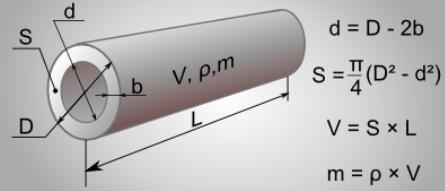
Complex technical calculations, applied by professionals, allow to calculate the complex influence of these factors on the water supply system. However, for premises in an apartment building their use is hardly advisable.
Typical Solutions
As a general rule, pipes with a diameter of 10 or 15 mm are chosen for the water pipe, while the pipe diameter for the riser should be 25 mm. When purchasing pipes of the specified diameter, be prepared for the fact that these products do not have jewelry accuracy. Ie a pipe of 10 mm actually can have a diameter of 10-12 mm.
Complicated plumbing work involves the use of pipes of increased diameter. They are optimal for operating the system with numerous joints, turns and a permanent change in water pressure.
Let's summarize: when choosing, we pay attention to the following points:
- The more complex the design of the water pipe, the larger the diameter of the pipes.
- For pipes with hot water pipes with reinforced walls are required.
- The higher the rate of water consumption, the greater the diameter of the pipes.
Modern plumbing system can not be laid, if you do not understand the dimensions of the pipes. The cross-section of such pipe products is of paramount importance.
1 Difficulties with pipe diameters of steel and other materials
Now for laying in-house water pipes, a metal pipe is usually used - copper, steel or aluminum. Metal-plastic (they are called combined) and plastic products are also often used. They can differ from each other in their geometric parameters. In this case, the dimensions of the elements are determined by the following indicators:
- nominal and internal section (the key figure in the calculation and designation of pipe structures is the inner diameter);
- wall thickness;
- external section.
In addition, there is another diameter - the conditional pass. It is understood as the rounded value of the internal section of the product, measured in millimeters.
In Soviet times, the diameter of all water pipe structures was measured in inches. In our days, many sold on the market and in construction stores have the dimensions indicated in the generally accepted metric system.
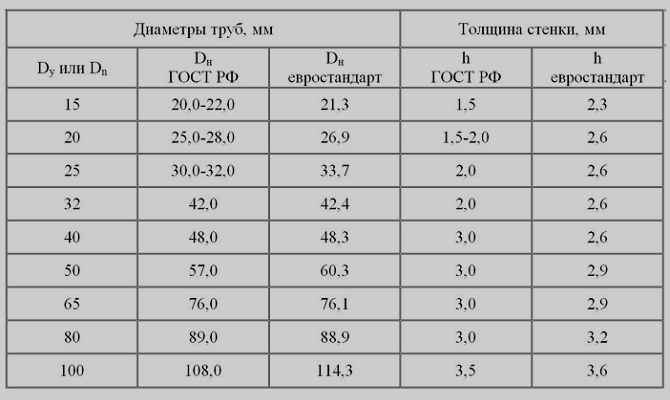
In this case, old, "inch", products by designations and names differ from "metric".
This causes serious difficulties when replacing steel pipelines with plastic, aluminum, combined or copper pipes.
2 Cross-sections of water pipes
When installing water pipes consisting of plastic and metal elements, special adapters are used, which are manufactured taking into account the geometrical dimensions of the pipes made of these materials. Due to this serious problems with the joining of the plastic element to the steel does not arise. But aluminum is manufactured by metric standards. When working with them, you need to take into account both the inner and outer diameter.
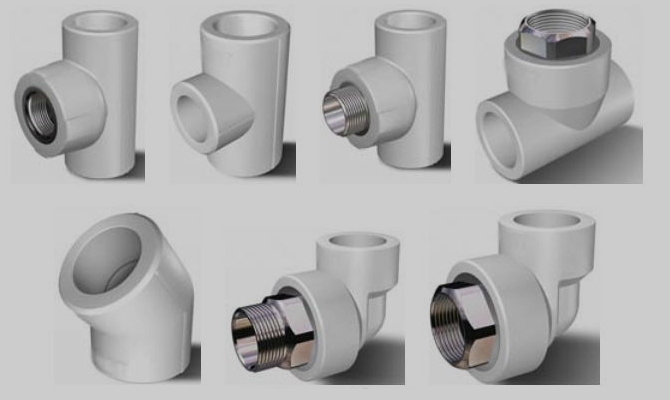
To minimize the problems with the selection of pipes for water supply and drainage systems, a threading system for the external cross-section of the water supply elements was created. In accordance with it, the pipe thread has the following diameters:
- approximately 58 mm - a two-inch pipe;
- 45,8–46,2 – 1,5”;
- 32,7–33 – 1”;
- 29,9–30 – 7/8”;
- approximately 26 - 3/4 ";
- approximately 20.5 - half inch products.
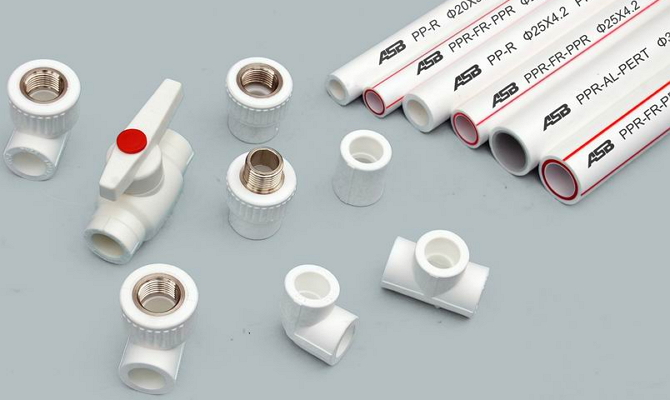
The internal cross-section of pipe elements with different threads is as follows:
- 50.8 mm - pipe 2 ";
- 38.1 mm - 1.5 ";
- 25.4 mm - inch tube;
- 22.2 mm - 7/8 ".
Half-inch products have a section of 12.7 mm, and with a 3/4 inch thread - 19 mm.
When marking the pipes, indicate their internal diameter in inches (for example, 1 ") and any plumber understands that in front of him a product with an internal cross-section of 25.4 mm.
3 A few words about the choice of pipes for water supply
The dimensions of the water pipe elements (in particular, the value of their cross-section) are selected on the basis of standard plates, which are easy to find on the Internet. With the help of such tables, the right diameter will be chosen even by a person very far from the wisdom of installing a water pipe. You will need to find out what water pressure is in the network (by this parameter you understand the capacity of the water supply system) and on the basis of this value you will select the required cross-section of the pipe.
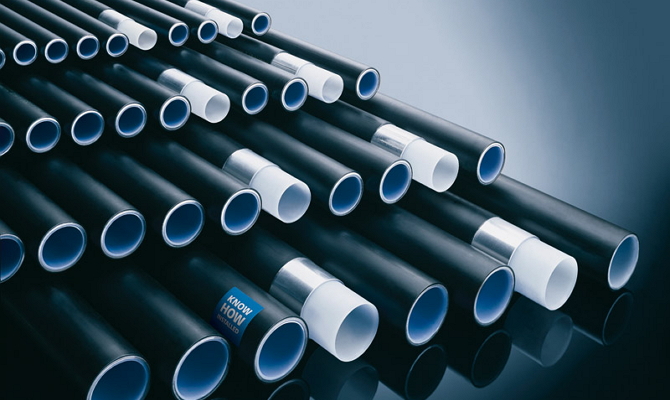
Of course, professional plumbers take into account many other characteristics of the network, for example, the total length, the number of turns and joints of pipes. But when laying a water pipe in an ordinary apartment or a private house, all this will be superfluous. As a rule, when installing domestic systems, pipes of such diameters are used:
- 1 and 3/4 "(in the metric system - 25 and 20 mm) - for risers;
- 3/8 and 1/2 "(15 and 10 mm) - for supplying water to the sanitary equipment.
Anyway, but we all had to face the installation of a water system or the replacement of water pipes. If a person is not a professional in this field, it will be somewhat difficult for him to orient himself in the vast offers on the market, especially if the system is to be arranged from scratch.
But regardless of whether you hire a master or work independently with pipes, it is very useful to understand what the diameters of water pipes can be, and also in the difference between the diameters of steel and plastic water pipes.
General information about the diameter of water pipes
The water pipes made of different materials vary in size somewhat, in particular, according to the classification of measuring measures.
What are the dimensions of the water pipes:
- inner diameter - the basic conditional characteristic of both connecting units and water pipes;
- Dy, the diameter of the conditional branch - so is the nominal value of the inner diameter calculated in millimeters, its rounded value;
- Dn - nominal diameter;
- outside diameter;
- wall thicknessand.
In those times when progress was being made somewhere near bypassing the countries of the post-Soviet space, the diameters of the water pipes were simply not called for unnecessary questions, for the reason that there were no other diameters.
Diameters of pipes for plumbing of various materials
Today's market can offer a slightly more diverse choice. For this reason, the amateur does not have a hard time trying to navigate and choose among the plastic, metal-plastic and other related diameters.
Especially difficult to choose, when it is necessary to join repair pipes from different materials.
When installing the water supply fitting, changing the "inch" water pipes from steel to plastic pipes, it is necessary to take into account that the names and notation in inches of the present metric dimensions do not correspond.
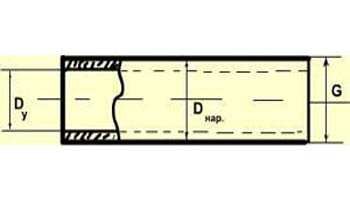
The systems of calculating pipe diameters from various materials
When water pipes are joined from steel pipes with plastic pipes, standard transition elements can be used - they are performed taking into account the sizes of water pipes from each material.
A few big difficulties can be if replacement of copper and aluminum pipes are required, since they are manufactured according to metric standards. In this case, it is necessary to take into account the actual metric size of both the outer and inner diameters.
The designations of pipe sizes for a water pipe differ slightly from the conventional ones, and given that plumbers are rather inventive people, it is not surprising that they found an excellent way out of the situation. A special convenient threading system for outer diameter was developed.
Describe it can be something like this. A half-inch pipe is produced with a diameter of less than 21 mm, the same diameter and external thread. But for the designation, it is indicated in accordance with the internal diameter and the word "pipes" is added. In the documentation it looks like this: 1/2 "pipes.
Diameters of steel water pipes
The internal diameter of pipes with different threads will be as follows:
- pipe 1/2 inch - 12.7 mm;
- pipe 3/4 inches - 19.0 mm;
- pipe 7/8 inches - 22.2 mm;
- inch pipe - 25,4 mm;
- 1.5 inch pipe - 38.1 mm;
- 2 inch tube - 50.8 mm.
Pipe thread diameters:
- pipe 1/2 inch - 20.4 - 20.7 mm;
- pipe 3/4 inches - 25.9 - 26.2 mm;
- tube 7/8 inches - 29.9 - 30.0 mm;
- inch tube - 32.7 - 33.0 mm;
- 1.5 inch tube - 45.8 - 46.2 mm;
- 2 inch tube - 57.9 - 58.3 mm.
After acquaintance with the sizes of water pipes, it is much easier to find your bearings when choosing. In order to minimize the problems associated with the joining of steel and plastic pipes, it is possible to study special tables, where the sizes of pipes of water from different materials are given.
Selecting the diameter of the water pipe
Choosing a diameter for pipes is desirable in accordance with the pressure of water in the system, the number of joints and turns, the length of the water pipe.
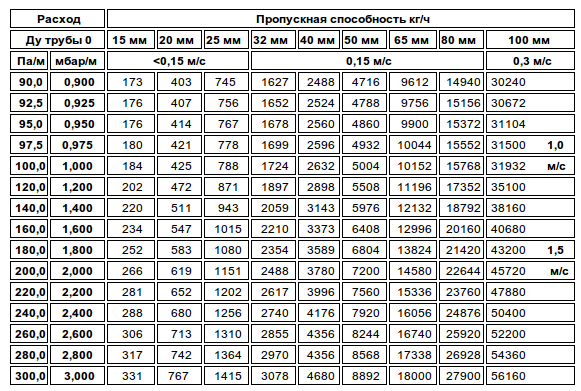
Of course, there are special calculation formulas, which take into account the decrease in water pressure, which will depend on the number of joints, turns, and the length of the pipeline with the corresponding coefficients.
However, the practical use of such formulas for intra-apartment wiring is very rare.
Usually simply choose pipes for a waterpipe - which diameter:
- 15 millimeters (1/2 inch)
- 10 millimeters (3/8 inches).
When installing a riser pipe is selected, in which the internal diameter is:
- 25 millimeters (one inch);
- 20 millimeters (3/4 inches).
The diameter of the pipes is still quite a delicate issue. While the internal diameter of the half-inch plastic pipe varies from 11 to 13 mm, and the one-inch diameter varies from 21 to 23 (depending on the manufacturer), it is only possible to determine exactly what diameter your pipes have and how much they need to be replaced, only a plumber with a wide experience of work.
With complex wiring, multiple joints, bends and the need to lay pipes for a considerable distance, when the head in the system is underestimated for some reason in comparison with the standard head, it should be considered the possibility of wiring with large diameter pipes.
Of course, it hardly makes sense to do the wiring in such a way that the diameter of the water pipes chosen for this purpose is larger than that of the riser. The larger the diameter, the better the head, and the pressure, but the situation is unlikely to be so serious that you will need a very accurate calculation of the diameters for the pipes.
Calculation of throughput for water pipes
Definition of the concept of bandwidth
Before you become acquainted with the rules for calculating the throughput of water pipes, it is necessary to study what is the throughput in general, and for which it is necessary to find out this indicator.
The throughput is a metric characteristic, thanks to which it is possible to calculate and show the ratio of the limiting volume (in this case the liquid) passing per unit of a certain length of time through the cross section of the pipe.
In addition to the familiar to all, recently, steel pipes have been used in large volumes from metal-plastic or from polymers. That's when the attitude to the capacity of the water pipes changed.
Unlike steel pipes, polymer pipes do not overgrow inside and are not susceptible to corrosion in the most inappropriate places, that is, the channels in such pipes are not jeopardized by natural multilayer deposits, and their throughput remains for a long time normal. At the same steel pipe, the throughput will change in a smaller direction with time.
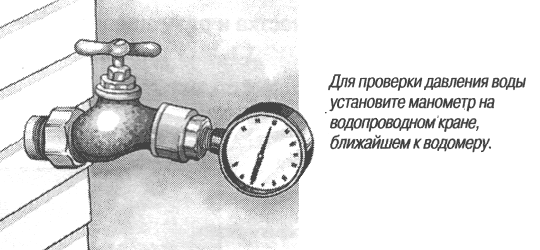
Why to calculate bandwidth
In addition to taking into account the carrying capacity in accordance with the volume of the transported substance, it is absolutely necessary to determine the throughput of the water pipes themselves in order to calculate the method of connecting the sanitary equipment and equipment available in the house, and also to calculate the diameter of the water pipes.
This must be done, for example, so that when you turn on the tap in the kitchen, you can be sure that these actions will not stop the simultaneous supply of water to the bathroom.
The concept of hydraulic calculation of the pipeline includes both pipe materials, and the length of the pipeline, and the number of water consumption points and equipment, as well as the capacity of the pipes.
Its calculation can be done in three different ways, at least, such are the computational possibilities for today:
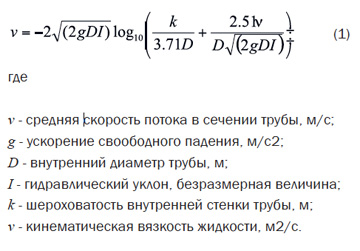
The pipe capacity is calculated using parameters such as the inner diameter of the water pipe, the length of the entire section, the roughness coefficient for the pipe material that is specified in the conditions, the coefficient of local resistance (bends, expansion joints, tees), internal overgrowth of the pipeline.
The first option is most problematic. Much more convenient is the choice of diameter using the second or third method.
Correctly calculating the value of the cross-section of water pipes, and also equipping the system with compensators and other necessary elements, the water in the house will always go with a good head, and when it is switched on in one place, the other pressure will remain unchanged.
Everyone who plans to install a water supply system independently should consider the standard sizes of water pipes on the market. This information will be very useful, because only knowing the cross-sections and the diameters of parts that are used in the work, we will be able to find the appropriate fittings and adapters, as well as equip the connection to household appliances.
Below we will provide general information on pipe sizes, as well as provide reference data that will facilitate your selection of equipment at the design stage.
Main settings
Key dimensions
For laying hot and cold water supply systems, pipes from various materials are used today.
If you plan to perform the installation yourself, then, most likely, you will use such varieties:
- Steel.
- Copper.
- Polyethylene.
- Polypropylene.
- Metal-plastic.
In spite of the fact that the assortment of products from each category is rather wide, and the sections are basically standardized, certain differences are still present. That's why when buying materials for you need to pay attention to the functional parameters of products.
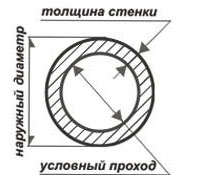
Dimensions of water pipes are determined by these values:
- Dn is the nominal diameter.
- Dy - conditional pass (the internal section, expressed in millimeters).
- Wall thickness (the more - the stronger the design, and the higher will be the pressure maintained by it).
- Outside diameter.
Note! The value of the outer diameter is very important when we are planning a hidden installation of a water pipe and preparing the shrouds for laying out the contours. In other cases it is better to operate with the concept of "conditional passage".
Inches and millimeters
Very often, manufacturers specify the size of water pipes in inches - and a millimeter in greater or lesser side may cause insufficiently sealed connection:
- When docking products from one material, such situations arise rarely, but when replacing, for example, steel structures with plastic or copper, you can get into an unpleasant situation.
- The thing is that inches are used to mark the thread, which is cut on the outer surface. And since the wall thickness of different models may differ, there is a risk of error.
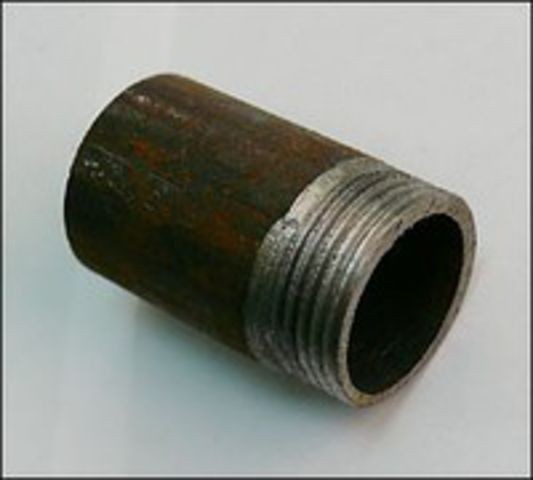
Advice! In order not to be confused, it is better to focus not on the outer diameter of the product, but on the value of Dy - that's exactly what it corresponds to the inch marking.
The most common sizes of water pipes in mm and inches are given in the table below:
| Thread, in inches | Conditional pass, in millimeters |
| 3/8 | 10 |
| 1/2 | 15 |
| 3/4 | 20 |
| 1 | 25 |
| 1 1/4 | 32 |
| 1 1/2 | 40 |
| 2 | 50 |
| 2 1/2 | 65 |
| 3 | 88,5 |
| 4 | 114 |
As for practical use, they usually focus on such data:
- For the installation of internal water pipes, the instruction recommends the use of pipes with a cross-section of 3/4 inch to 1 1/2 inches, depending on the required throughput.
- Thicker products are usually used for laying risers and equipping waterways.
dimensions
Metal
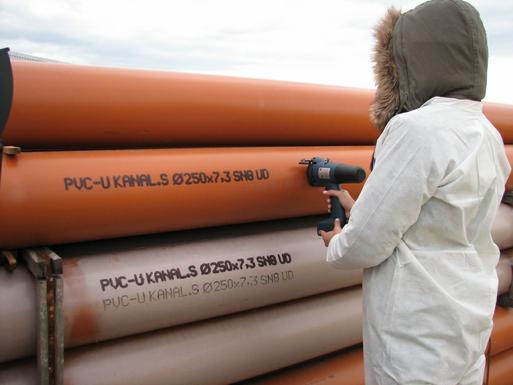
Until recently, the most common type of parts for laying water was steel products.
In the labeling of such elements, two parameters are usually indicated:
- Outside diameter.
- Wall thickness.
To know the internal section, it is sufficient to take two wall thicknesses (in millimeters) from the diameter value.
The most demanded assortment of steel structures is given below:
| Outside diameter | Conditional pass | Wall thickness | ||
| Lungs | Standard | Reinforced | ||
| 10 | 17 | 2,0 | 2,2 | 2,8 |
| 15 | 21,3 | 2,5 | 2,8 | 3,2 |
| 20 | 26,8 | 2,5 | 2,8 | 3,2 |
| 25 | 33,5 | 2,8 | 3,2 | 4,0 |
| 32 | 42,3 | 2,8 | 3,2 | 4,0 |
| 40 | 48 | 3,0 | 3,5 | 4,0 |
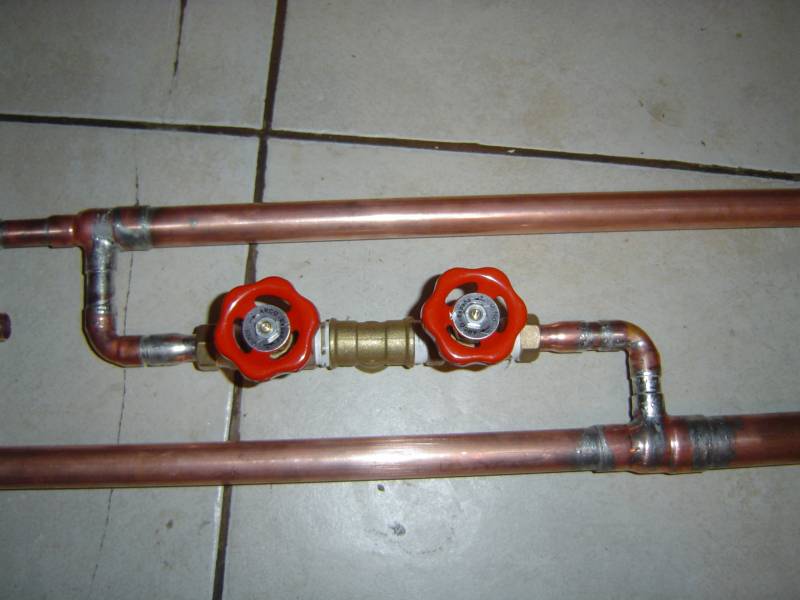
Despite the fact that the price of the material does not differ democratic, in some cases copper circuits are used for water supply. Their dimensions are slightly different from steel products:
Advice! When choosing metal elements for the installation of a water pipe, it is worthwhile to measure the dimensions of several items from the purchased lot with the help of a caliper. So the accuracy of the definition will be much higher!
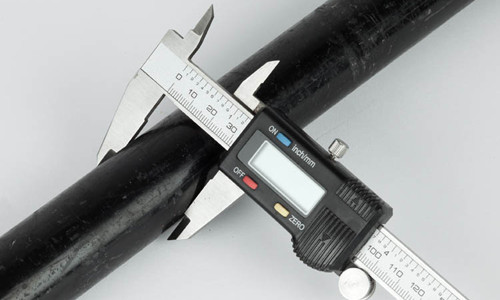
Plastic
Dimensions of plastic pipes for water pipes, widely used today as an alternative to metal contours, are also very diverse. At the same time, many manufacturers of polypropylene, polyethylene and metal-plastic parts use their own dimensional mesh, therefore within the same system it is desirable to apply the designs of the same brand.
Of course, the discrepancies, if they arise, will be insignificant, but for the inexperienced master and they can present a difficulty.
![]()
Table of the sizes of plastic pipes for a waterpipe (polypropylene of different density) contains the information on the most claimed models. All dimensions are in millimeters:
| Outside diameter | PN30 | PN20 | PN10 | |||
| Wall thickness | Internal section | Wall thickness | Internal section | Wall thickness | Internal section | |
| 16 | — | — | 2,7 | 10,6 | — | — |
| 20 | 3,4 | 13,2 | 3,4 | 13,2 | 1,9 | 16,2 |
| 25 | 4,2 | 16,6 | 4,2 | 16,6 | 2,3 | 20,4 |
| 32 | 3,0 | 21,2 | 5,4 | 21,2 | 3,0 | 26,0 |
| 40 | 3,7 | 26,6 | 6,7 | 26,6 | 3,7 | 32,6 |
| 50 | 4,6 | 33,2 | 8,4 | 33,2 | 4,6 | 40,8 |
| 63 | 5,8 | 42,0 | 10,5 | 42,0 | 5,8 | 51,5 |
| 75 | 6,9 | 50,0 | 12,5 | 50,0 | 6,9 | 61,2 |
Of course, when laying communications, other dimensions of plastic water pipes can be used. However, to solve most of the problems that arise when performing routine repairs, the information indicated in the table will be enough.
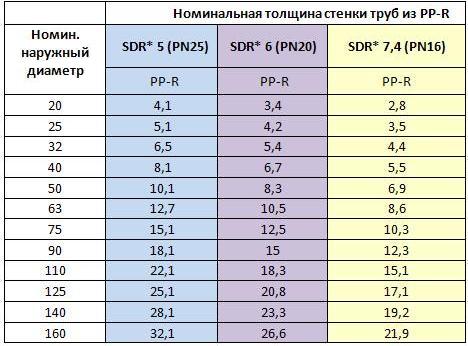
Conclusion
The dimensions of the pipes for the water pipe must be observed with the greatest possible accuracy. Even with a deviation of a fraction of an inch, the sealed connection of two sections of the network or the fitting of the fitting will be virtually impossible, which means that the reliability of the entire system will be compromised ().
You can learn more about the dimensions and marking by reading the regulatory documents and viewing the video in this article.
The external dimensions of cylindrical tubular goods are one of the main parameters that are indicated in the marking. The internal diameters of the water pipes are determined by subtracting the thickness of the wall, multiplied by two. The exception is made of steel and cast iron materials, which are marked on the conditional pass. This circumstance should be taken into account when installing systems from different materials.
| Diameters of steel water pipes | ||
| Thread Size (mm) | Internal section (mm) | Notation |
| 20.4 - 20.7 | 12.7 | 1/2"" |
| 22.4 - 22.7 | 15.9 | 5/8"" |
| 25.9 - 26.2 | 19.0 | 3/4"" |
| 29.9 - 30.0 | 22.2 | 7/8"" |
| 32.7 - 33.0 | 25.4 | 1"" |
| 45.8 - 46.2 | 38.1 | 1/5"" |
| 57.9 - 58.3 | 50.8 | 2"" |
The marking indicates the outer size and thickness of the wall. For example, with a diameter of 76x3 - a product with an external section of 76 mm, a wall of 3 mm and an internal section of 70 mm. To connect steel materials with plastic, fittings are used, at one end of which there is a carving for steel, on the other - a smooth coupling for soldering plastic. To select the connecting element, you need to focus on the thread size of the steel material.
Pipe products from copper are marked by their external size, but in inches, which can also create difficulties in installation. In this case, it should be borne in mind that in marking 1 "" equals 25.4 mm, that is, the figures correspond to metric standards.
Standard diameters of plastic pipes
Dimensions of pipe products from polyethylene are determined by GOST 18599-2001. The range is quite large - from 20 to 1200 mm. The most common are 63, 80 and 100 mm. for water supply PE 63 - a product with a short-term strength, but not resistant to cracking and even destruction. Does not withstand a pressure of more than 6.3 MPa. At the moment, almost not used because of the short operating time.
Piped pipelines PE 80 have high resistance to internal pressure. Manufactured from low-density polyethylene. Are intended for transportation of water with temperature from 0 to 40 ° С. Of these, pipelines for water and sewage systems are installed. The sales network comes in black, with a longitudinal blue stripe with a diameter of 16 to 110 mm. There are 9 types of these products, differing in working pressure (from 0.32 Mpa to 2.00 Mpa).
Pipe water PE 100 - pressure, manufactured by extrusion and designed for installation of external water supply systems and pressure sewage systems with a temperature of 0 to 40 ° C. The sales network is supplied in coils and sections. The product is black with a diameter of 16 to 110 mm.
On the labeling of polyethylene materials there is the word "pipe", polyethylene grade, nominal diameter, wall thickness, "drinking" or "technical", designation GOST.
Cross-linked polyethylene is designated as PEH-a, PEH-b, REX-c, PEX-d.
Marking of polypropylene products
The labeling usually contains information about the certification, the trademark or the name of the manufacturer, the name of the standard of conformity (eg 2458 ISO 4200 / DIN), material designation, external size and wall thickness, nominal pressure (PN).
The outer dimension can be indicated both in the metric system and in inches. It all depends on the manufacturer.
From the table it can be seen that the size notation does not correspond to the traditional metric system.
The diameter in the marking is indicated in the same way as in polypropylene. The material name can be PVC (PVC), CPVC (CPVC) or UPVC (plasticized PVC).
Marking of plastic products
On the marking of the plastic composite there should be a designation of the type of plastic, the outside dimension, the nominal pressure (PN), the transported environment, batch number, year and date of manufacture and 13 digits containing information on the shift number, conveyor line, machine,
If the steel pipe and plastic water pipe are used to install the water pipe, the diameters can be determined from the corresponding table. To join segments of different materials, there are fittings, which take into account all these features.

